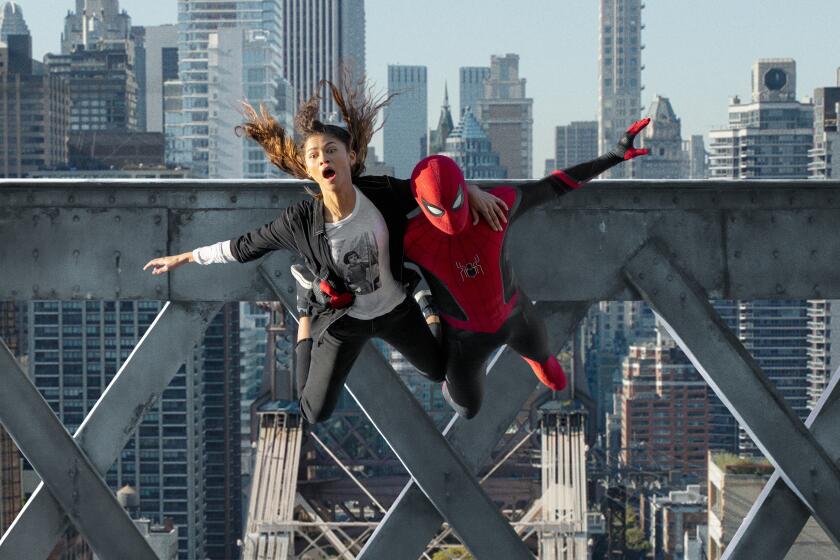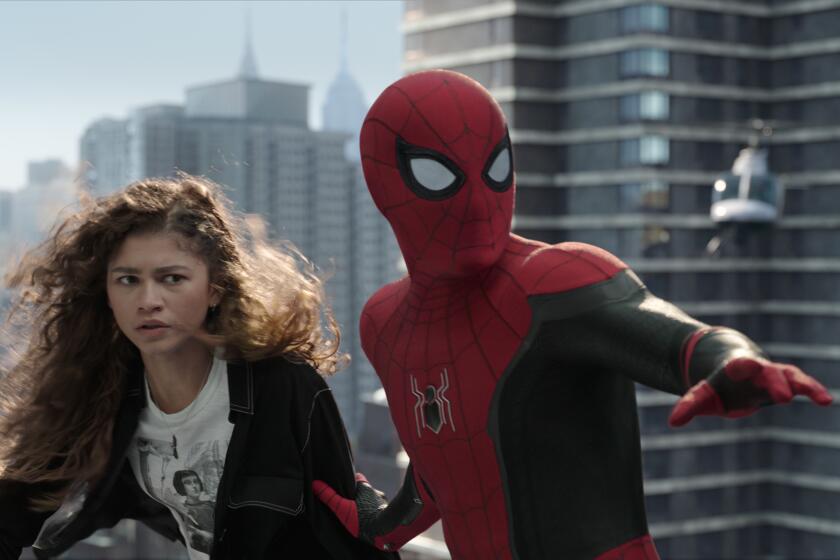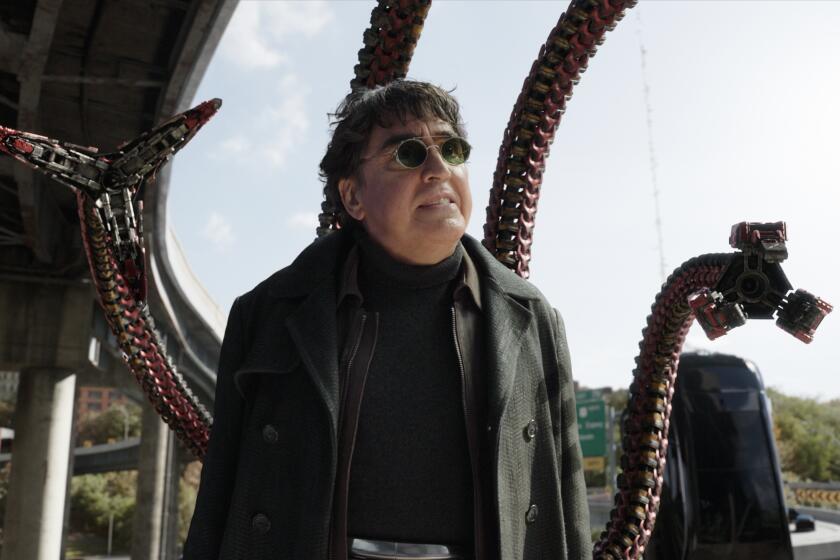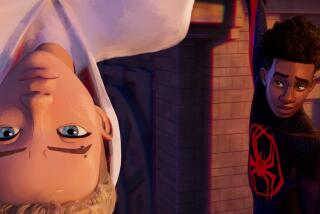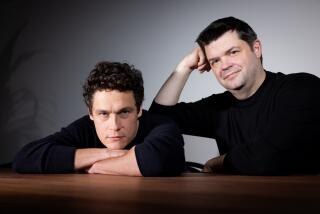‘Spider-Man: No Way Home’ writers reveal why they finally use that iconic Spidey line (twice)
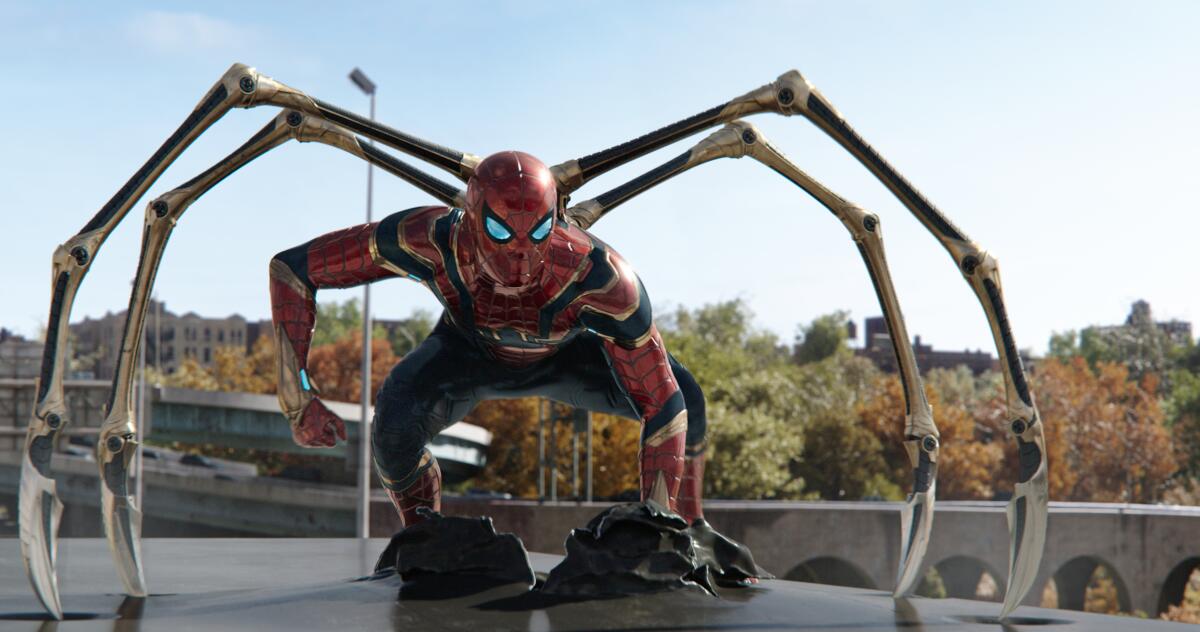
SPOILERS: This story freely discusses the entirety of “Spider-Man: No Way Home” and is intended to be read after you’ve seen the film. If you haven’t seen the movie, consider reading our review or spoiler-light breakdown instead and coming back later.
“Spider-Man: No Way Home” is the ultimate Peter Parker story — in more ways than one.
In his third solo outing, Tom Holland’s titular webslinger faces challenges unlike any he has had before, which included being wiped out of existence at the snap of a powerful alien’s fingers. “No Way Home,” which has grossed more than $1.5 billion at the box office worldwide since its December debut, sees Peter trying to wish away his problems after his identity as Spider-Man is revealed to the world.
But he learns very quickly that things get complicated when magic is involved, especially if it’s powerful enough to burst open the multiverse and pull in characters from “Spider-Man” films of yore.
According to “No Way Home” writers Chris McKenna and Erik Sommers, the initial idea, which they credit to Marvel Studios President Kevin Feige, was for the villains of Sony’s past “Spider-Man” film series to show up as a version of the Sinister Six as a tag at the end of the picture. But over time, it was decided that their introductions should come much sooner.
Tom Holland plays Peter Parker once more in a playful, multiverse-collapsing mashup from director Jon Watts.
“We started breaking a story with our wish list of which characters we could bring into this world,” said McKenna. “It was a big wish list. And every wish eventually started feeling like this possibility, this wish, could come true.”
This wish list, it turns out, included “Spider-Man’s” Tobey Maguire and “The Amazing Spider-Man’s” Andrew Garfield reprising their roles as the Peter Parkers of their respective series too. For McKenna and Sommers, the aim was not only to stay true to the characters created by directors Sam Raimi and Marc Webb in their past films but to also ensure that the expanding guest list wouldn’t overshadow the Marvel Cinematic Universe’s Peter and his trilogy-capping story.
“We really wanted each character, from the villains to the other Peters, to feel like they had come out of their worlds in a very specific place,” said McKenna. But “how do we live up to all those characters, tell stories with them and hopefully give them all arcs in some way, yet first and foremost, have it be a Peter Parker story? That became our challenge throughout this entire thing.”
McKenna and Sommers discuss the charms of working with three Peter Parkers, that iconic “Spider-Man” line and more in this interview edited for length and clarity.
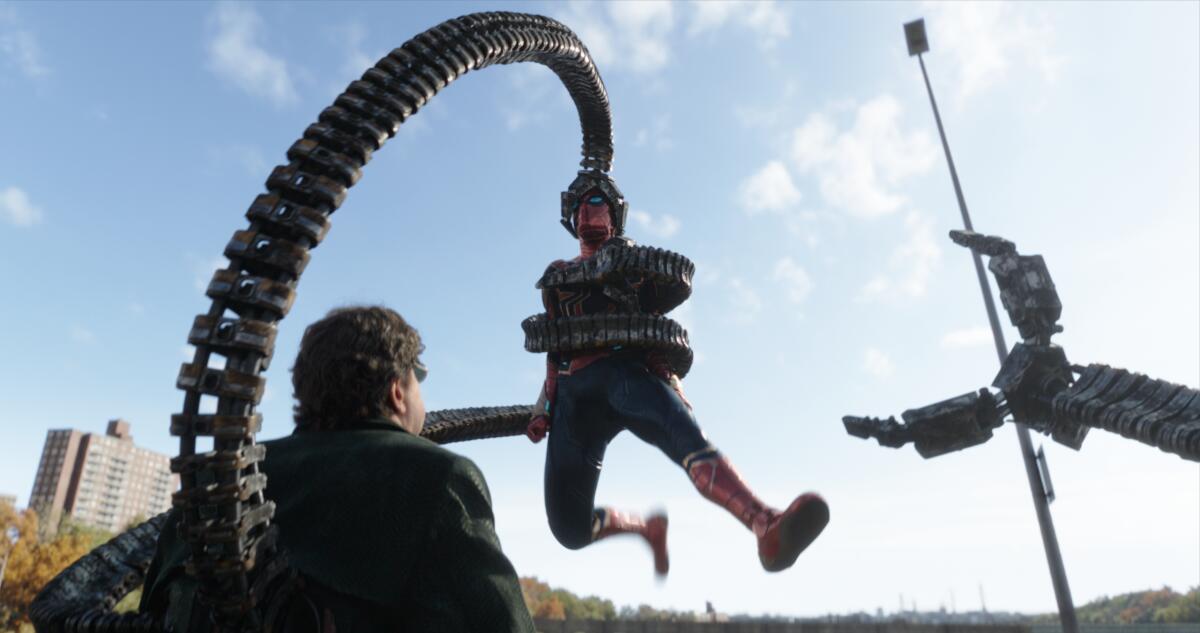
It’s a tall order to manage Tom Holland’s Peter Parker arc while also exploring where two other Peters are in their own timelines. How did you handle that balancing act?
Sommers: It was really exciting, but also intimidating. We really wanted to honor them, and we wanted to make sure that if we’re going to bring these two guys in, it’s not just this flashy thing we did.
We wanted to make sure that [Maguire’s Peter and Garfield’s Peter] would come in with different perspectives, so that they weren’t just some sort of monolithic thing. We wanted to make sure that, first and foremost, they service the story of our Peter Parker, but secondly, we wanted it to feel like when they go home, they’ve learned something too. That this has had an impact on their journey. So we had to put our heads together and decide where we think these guys are right now in their lives.
At the end of his last movie, Andrew Garfield’s Spider-Man had been told by Gwen to carry on, try to maintain hope. It appealed to us — the idea that he did try but he didn’t succeed, and he’s given in a little bit to his grief and anger.
Explaining the ‘Spider-Man: No Way Home’ post-credits scenes: Here’s what they could mean for the future of the Marvel and Spider-Man cinematic universes.
McKenna: This was a story that was evolving even as we were making the movie. I remember being in Atlanta in November, I think, of 2020 and we had to really attack the introduction of these characters.
We originally had them sort of just show up as Doctor Strange finds them at Peter’s lowest point, but there just wasn’t any room to explore their characters there. Then we took out Doctor Strange from that, and it was Ned [and MJ] finding them — it just allowed these characters to not only enter in a fun, unexpected way at Ned’s Lola’s house but also have these very protective friends and play around with Andrew being his character and Tobey being this wise one.
Once we started writing it from that scene, it really seemed to open it up to treating these characters as if they were on their own journeys. Tobey really wanted to lean into the idea that he was here to help [MCU] Peter. That really helped us flesh out how the two Peters are here to help in this critical period of our Peter’s journey — whether he was going to take revenge in the same way that they sought revenge, knowing it leads to nothing but darkness. One Peter was still trapped in that darkness and one made it out, but it wasn’t an easy journey.
Because I come from a big family, for me, the the paradigm I kept on thinking about was three brothers — older brother, middle brother, younger brother — and really leaning into Andrew’s middle brother complex.
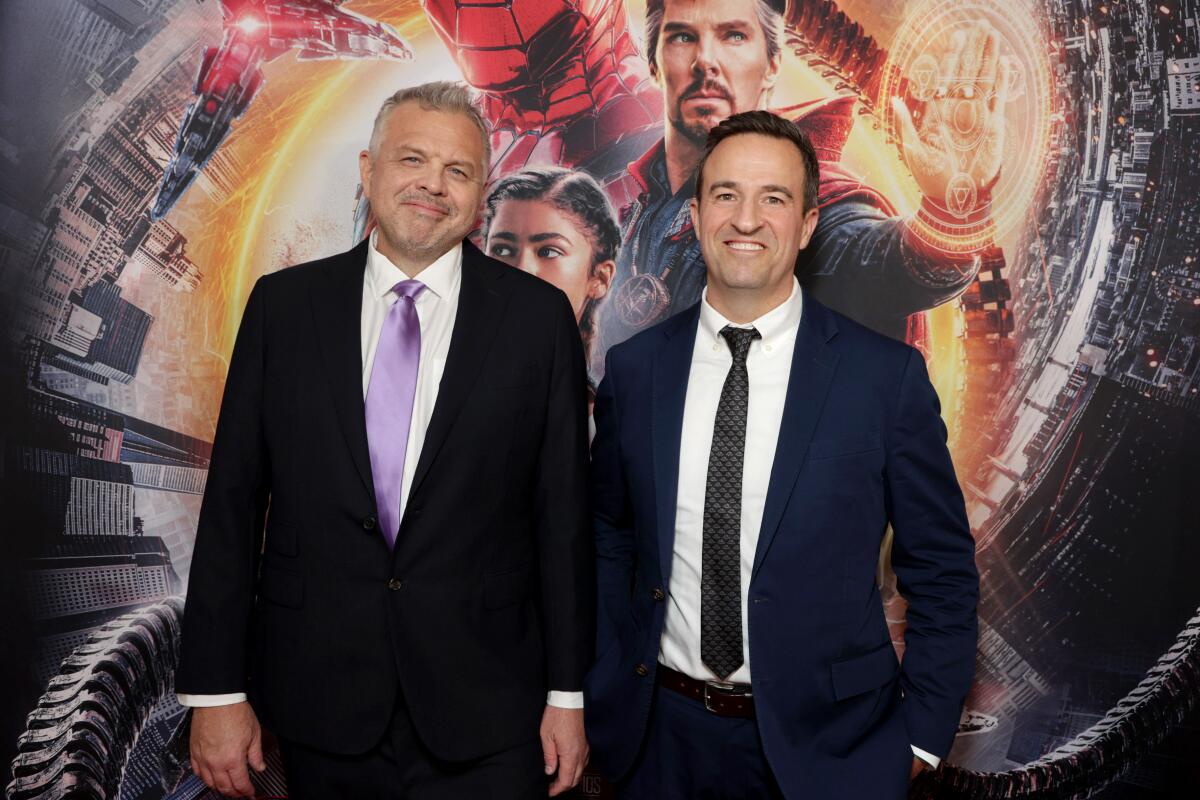
Watching the three Peters interact and getting to know each other is particularly delightful. Did Tobey and Andrew have thoughts about where their characters would be?
McKenna: Tobey really wanted to play it with a Zen calm — his Peter had been through a lot in life but knowing that in a lot of ways he’d made peace. There was always that line with his character between how much we wanted to give away and how much was going to feel like just fan service. Tobey was like, “less is more, less is more.” He knows that just with a smile, with a look, he brings so much to it, and he really helped shape it so that we weren’t overwriting that character.
With Andrew, it seemed like we were all on the same page in terms of coming from the darkness of where he was with the death of Gwen. There was a meta element, obviously, that made its way into this. He didn’t get his third movie. He’s trapped in the dregs of that bottom out. That’s why, when he has that moment [of saving] MJ, it feels like such a great win. I think that was [director] Jon Watts’ idea to really give him something that would help heal him from where he is right now. Emotionally, we knew that we wanted him to take another step on this journey — that he had to — and that he could only do it with these other two people.
I particularly enjoyed the reassurances from the other two that Andrew is amazing.
McKenna: I think a lot of that was those guys riffing with each other, and with Jon, on the set. They were having such a great time; it was a fun negotiation of their characters. How would they interact with each other? What would they be talking about?
Tobey, the whole back thing was a callback to him getting hurt on “Seabiscuit” and maybe not even doing “[Spider-Man] 2.” And Andrew “yes and”-ing that and having his own issues. All of that stuff was absolutely charming. We gave them a lot of ideas, but they found so much of that stuff themselves in that sequence. I think people would probably watch a pure half hour of those guys riffing with each other, it’s so charming.
Three Times writers dive in for all the “Spider-Man: No Way Home” spoilers we couldn’t talk about until now.
Sommers: Tom Holland did such an amazing job. Having these two other Spider-Men come into his movie and being able to immediately become comfortable with them, riff with them like that and create that three brother dynamic.
McKenna: A great example of how integral Tom was to all of this is that rooftop scene [where all three Peters meet for the first time]. It was a crucial scene, obviously, and it went through a lot of reworking.
We had a version where [the other Peters] start talking about how they know what our Peter is going through. And it was Tom Holland who said, “I would cut them off right there. I’d be so furious. I would say, ‘Please don’t tell me that you know what I’m going through. I cannot hear that right now.’” And that is in the movie because Tom was absolutely right. Here are these two guys you just met. No matter what wisdom they think they can impart to you, it’s the last thing you want to hear.
It was just that kind of great collaboration with all of them ... Even the little ways that Tobey and Andrew are finishing their sentences in terms of the Uncle Ben of it all, it came together really well.
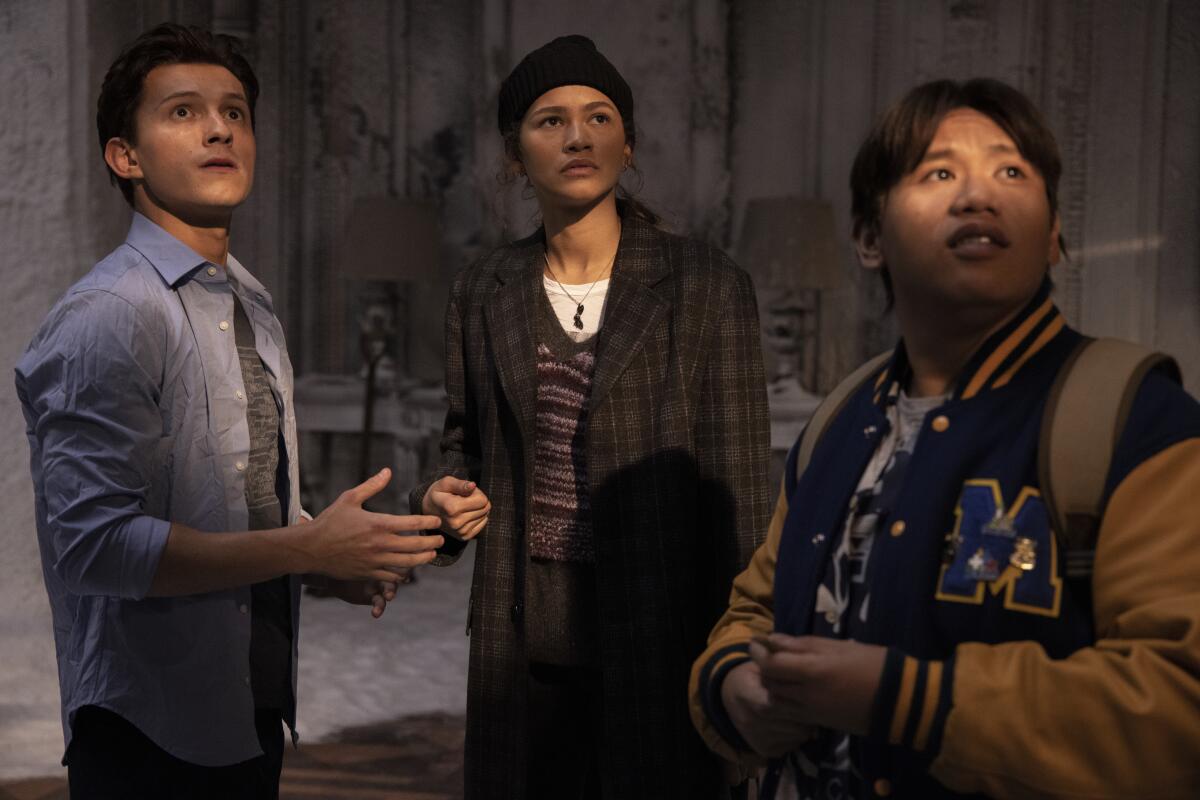
Speaking of Uncle Ben, there is no line that people associate with Spider-Man more than “with great power, there must also come great responsibility.” When you’re writing Spider-Man, does that line hang over your head? Was it something you thought about in the previous installments?
McKenna: That was a whole big conversation. I think it was Kevin, early on, that really felt like it should be the line from the original comic book. It was slightly altered in the other two Spider-Man movies, but he really wanted to get it the way it was spoken in the comic book. I think that was something he really wanted to try to work into this.
Sommers: It’s always been there with all three movies. It’s been sitting there because it is the iconic line that so well encapsulates Peter Parker and Spider-Man and what it is to be Spider-Man. It was always about trying to find the right time.
It was clear as this movie started to come together, and the fact that Peter was going to hit this low, low point, and just the very nature of the story — it being a test of his willingness to help others in spite of the cost to himself — we knew that it was time. And it was going to fit here [in that scene with May].
Then, the secondary question was, if May is going to say it to him, do we want that line to come back in the rooftop scene where the three Spider-Men are talking to each other?
We knew that we needed something to really help crystallize the bond between the three Spider-Men. It’s such a fraught scene. Our MCU Peter is in such a dark place ... we need to get that to an ending of the scene where he is listening to them. It’s about the three of them all realizing something about this bond they have. So again, that line came up. Ultimately, we decided that hearing one of them start the line, hearing another one of them finish the line, having that look between them — using the line to really help them realize just how deep this bond is between them, it felt right.
The cast and creatives of Sony’s ‘Spider-Man: No Way Home’ discuss spoilers, returning villains and the Marvel multiverse at the film’s premiere.
The one purely fun cameo is Matt Murdock. How did his appearance come together?
Sommers: It was clear from the get-go that because of the aftermath of Peter’s identity being exposed, he was going to be in big trouble and he was going to need a lawyer. And very quickly, the fan in all of us was like, what if it’s Matt Murdock? Wouldn’t that be fun? Can we do that? Like so many times in this movie, we were writing things as we hoped it would be, not necessarily sure we could get that certain actor, but it worked out.
McKenna: You look at the Marvel sandbox and who’s in the Marvel world that’s a lawyer? There’s Matt Murdock and Jessica Walters, She-Hulk. She was brought up too because they’re doing the She-Hulk show. But once it was clear that we didn’t want just some random or new character, it became, “Can we really have Daredevil be his lawyer?”
The tough thing was that we didn’t want to have too much of him in the movie, because then you’d think he was going to play a bigger role in the finale. We were just like, “OK, we can only have him for one scene” ... but it was great to have him.
More to Read
Only good movies
Get the Indie Focus newsletter, Mark Olsen's weekly guide to the world of cinema.
You may occasionally receive promotional content from the Los Angeles Times.
